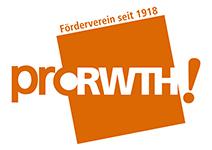Greetings!
We are Tachyon Hyperloop, a technical initiative by Team Tachyon e.V. engaging various engineering disciplines deeply interested in the concept of Hyperloop. Our vision is to build a sustainable future for transportation through the implementation and dissemination of Hyperloop. “Tachyon” is the scientific name given to a particle that travels faster than light, and our motto of “semper accelerans” is Latin for “always accelerating”. Hyperloop is a faster alternative to existing transnational rail and air travel and would be best applied to connect major cities to help integrate commercial and labour markets, or airports to fully utilise national airport capacity. Hyperloop’s low-energy potential could help alleviate existing and growing travel demand sustainably by helping to reduce congestion and offering a low carbon alternative to existing transport modes. With speeds 1.5x faster than the commercial airliner, it will likely change both the face of the transport industry, as well as socio-political boundaries and structures as we know them.
Hyperloop: Status Quo
Essentially, Hyperloop is ground-based transportation that uses magnetically levitated “Pods” in tubes with near-vacuum conditions to eliminate friction and propel passenger and cargo at speeds faster than an airplane (>1000km/h). It gained its recent popularity when Elon Musk first mentioned it as the “5th Mode of Transportation” in 2012, calling it “Hyperloop.
Since then, there has been heightened research and interest in Hyperloop and several organisations have formed to advance the technology. Estimates say the first Hyperloop system should be operational by 2025, feasibility studies in locations all over the world are underway.
There are still several challenges to a fully-realised Hyperloop system including engineering obstacles, safety and ergonomics, but it is a fair assumption that the reality of Hyperloop transit is not far. However, there is still a huge void in our local (Aachen) and regional (NRW, Euregio) research on Hyperloop. We wish to represent RWTH Aachen University, the city of Aachen and all our partners and supporters in strongly challenging the status quo while bridging the research-gap in making Hyperloop commercially feasible.
Tachyon Hyperloop: Team and Progress
The idea for Tachyon Hyperloop full-scale operations commenced in Mar 2020 with legal registration as “Team Tachyon e.V.” in August 2020 with now 38 members from diverse nationalities in both management and engineering studies. We also have a Board of Advisors consisting of alumni and Professors. We have a workshop and our “Schirmherr” at the Institute of General Mechanics (IAM). The team is divided into 7 working groups as follows: Mechanical Systems (MS); Propulsion Systems (PS); Electronic Systems (ES); Levitation Systems (LS); Innovations and Research (IR); Systems Integration (SI) and Business and Marketing (BM).
We partnered with the Collective Incubator e.V. to provide us with a co-working space and general guidance. We do have many supporters already Siemens AG, EVS GmbH and proRWTH. Although we still have a long way to go in terms of funding for our 1st prototype, these partnerships have helped us establish a very good base and credibility.
We have 4 ongoing projects currently:
- “Proton”: 1st prototype scheduled for end-2021, designed to reach 300km/hr
- “MiniPod 1000”: Propulsion research project with focus on motor and sensors
- “MiniPod 3000”: Levitation research project using a Halbach Array
- “MiniPod 4000”: 10m vacuum tube with a small levitating Pod using LIM
Developing a complete Hyperloop Pod by 2023 with levitation is most probably the biggest challenge. We also plan to participate in all student-competitions possible, like the European Hyperloop Week in Valencia, Spain.
Building the future! You are welcome to join or support our idea!
contact: contact@tachyonhyperloop.de
(Foto: Tachyon Hyperloop, Team Aachen)


